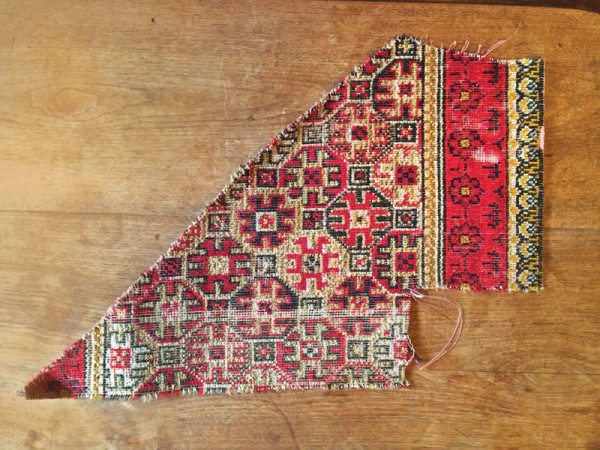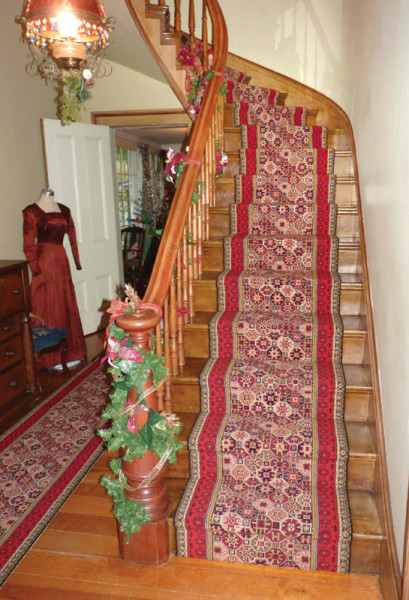
Forensic evidence: a carpet fragment. (Photo: Dan Cooper)
Using forensic evidence works with carpets, too. In my consulting on the reproduction of historic carpets, I’ve relied on not only period photographs but also existing samples. A recent job at Hanley Farm in Jacksonville, Oregon, presented a special challenge: only a small, triangular scrap remained, and it appeared that we didn’t even have an entire pattern repeat.

Reproduced Brussels carpet runner at Historic Hanley Farm, which was established in 1857. (Photo: Tina Sharp Reuswaat)
Because it’s been industry standard for 200 years, I knew that their runner should be 27″ wide. With a little detective work, I was able to discern the entirety of the pattern. The body comprises a repeating series of octagons, emulating those found in traditional Bokhara patterns. I could tell that the two outer motifs on any given row were the same, and eventually I figured out that the pattern shifts towards the center diagonally for four octagons, drops down one medallion, and then begins to repeat again. If you look very, very carefully at the fragment, you can see tiny amounts of extant medallions that confirm my decisions.
The artwork was created on a computer program at The English Wilton Company’s art department in England. The carpet was woven as a Brussels, or loop, pile, as it was done originally. It graces the staircase and hallway at Hanley Farm. More at historic-carpet.com; hanleyfarm.org







